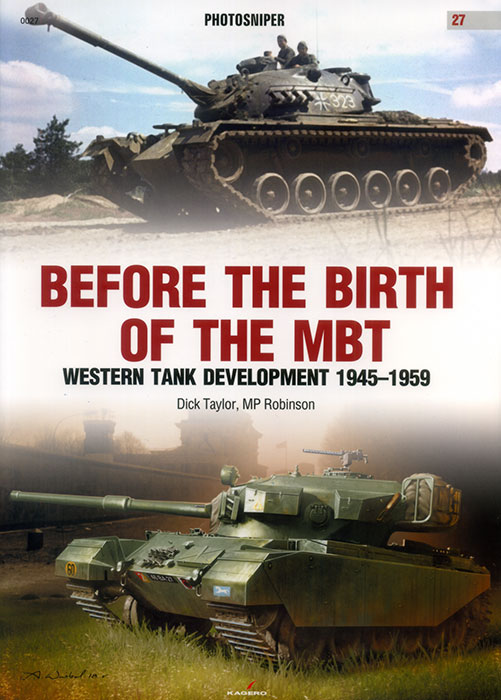|
|
|
|
| Home > Reviews > Modern > Kagero Photosniper No. 27 "Before the Birth of the MBT Western Tank Development 1945-1959" by Dick Taylor and MP Robinson |
Before the Birth of the MBT Western Tank Development 1945-1959
Kagero Photosniper No.27
Reviewed by Mike Garside
Summary
Title: |
Before the Birth of the MBT Western Tank Development 1945-1959 |
ISBN: |
9788395157585 |
Media and Contents: |
Soft Cover; 180 pages. |
Price: |
GBP£22.95 plus shipping available online from Casemate Publishing |
Review Type: |
First Read |
Advantages: |
Describes the old and new tanks used with a concise text illustrated with 150 black and white and colour photos. |
Disadvantages: |
Some photos are too small to display detail. |
Recommendation: |
An interesting book covering a neglected era |
FirstRead
This 180 page paperback is the first of a series showing how tanks developed from the war years until the present. During WW2 tanks developed quickly so that by 1945 they were very different from those of 1939. With the end of the war, the victorious nations had a lot of tanks available, the newer and better ones remained in service while each country approached new designs differently.
In the United States, little work was done until the Korean War broke out in 1950. That spurred on development, initially improving the M26 heavy tank into the M46 and finally the M47. But this was only an interim solution as the M48 series quickly followed it. Heavier designs were usually only to test ideas but the large M103 was introduced to counter the Soviet's Stalin series. Surplus vehicles such as wartime M4 and M24 then finally M47 were supplied to its allies as the Cold War set in.
Events in the United Kingdom were very different. After years of relying on American designs, 1945 saw the Comet enter service followed by the first Centurions. This was quickly improved with a new turret and better gun, it was to prove a winning design serving the UK for many years as well as being sold to foreign armies including NATO nations - often bought for them by the USA - and neutral states. A heavy tank to counter the Stalins appeared in the form of Conqueror while various designs for heavy gun carriers were produced but not adopted.
France was able to start with a clean sheet. There was some limited production of heavy tanks such as the ARL44 which offered little new and the AMX50 with its unusual oscillating turret but their great success was the AMX13 light tank. Intended as a light-weight tank destroyer able to be flown to France's colonies it was widely sold abroad. Meanwhile many French units used old and newer tanks supplied by the USA.
Sweden and Switzerland had been and remained neutral but wanted to be able to defend themselves. Sweden updated its wartime Strv42 with a bigger gun but like the Swiss also imported tanks. Both worked on designing vehicles better suited to their own conditions. When the West German Bundeswehr was formed in 1956 they had to rely on American tanks but quickly began work on their own designs.
In their different ways, these countries used what was available or produced new tanks while planning for the future which would see a new generation of tanks in the 1960s. This book describes the old and new tanks used with a concise text illustrated with 150 black and white and colour photos. Some of these are unfortunately printed to a small size so they lose detail.
Stowage diagrams cover early Centurions and the Conqueror, a series of excellent half-page colour side view paintings showing typical tanks of the era with several countries and colour schemes round off an interesting book covering a neglected era.

